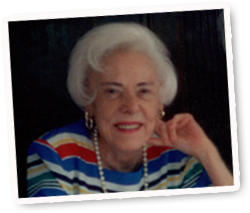
- Fellowship year:2019-2020
- University: Univeristy of Michigan
- Dissertation Topic/Category: United States
- Dissertation Title: From Church to State: The Fate of Established Religion in Early America
My dissertation, "From Church to State: The Fate of Established Religion in Early America," grew out of a reexamination of one of the most durable historical narratives - the seemingly inexorable "separation of church and state" after the American Revolution. Often invoked as a founding ideal of the American experiment, the separation of church and state was more than a concept or an idea; it was a tumultuous legal process that dismantled a centuries-old union between religion and government. To better understand the meaning of "religious establishment" in early America, my project explores the established Anglican Church in the colonial Chesapeake and then considers its dismantling in the fifty years after the Revolution,
A study of religion and government in Maryland and Virgina from 1720 to 1820, my work reveals that in the colonial South, the established Anglican Church not only enforced religious conformity but also imposed taxes, policed morality, kept vital statistics, oversaw the construction of roads, distributed poor relief, and inspected tobacco before export. These wide-ranging public duties reflected the established church's prerogative to promote communal order. My work in the first to detail the robust system of social welfare administered by parishes, which included financial assistance for the poor and disabled, as well as free medical care for the sick and injured. Perhaps the most novel part of my research has been highlighting that parishes owned - and bought and sold - slaves who worked on plantations belonging to the Church. Their slaveholding allowed parishes to amass wealth using public funds and actively partake in the plantation economy of the Chesapeake.
Recognizing the civic responsibilities and material wealth of colonial parishes raises new questions about what happened to the Church's power and property after the American independence. I have traced the sales or seizures of land, buildings, and enslaved persons belonging to 95 parishes, which amounted to more than 20,000 acres of land, hundreds of enslaved persons, and thousands of pounds sterling. This seizure of wealth, which has been largely overlooked by scholars, was comparable to the Henrician dissolution of the monasteries during the English Reformation and the biens nationaux confiscated during the French Revolution. Disestablishment ended the parish system of public assistance and left the indigent white population, particularly single mothers and the elderly, without a social safety net. For people of color, the stakes were even higher. The state's seizure of church property included enslaved persons, which separated families and broke apart communities. Rather than treating disestablishment as a mere separation of institutions, my research shows that the transfer of civic duties and valuable property from church to state fundamentally transformed both religion and goverment in the new American republic.
